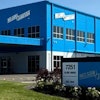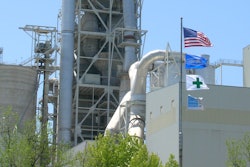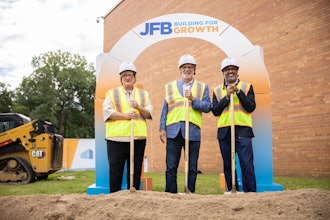Evaluating a new powder or bulk solids process equipment purchase? Chances are you are focused on the most immediate equipment requirements: Will it fit in my space and layout? Is it in budget? Does it effectively and safely move or transfer the material/powder?
While these requirements are all necessary and important, they leave out an important strategic consideration.
Strategic manufacturing organizations are also asking this important question: Does the equipment purchase fit into the existing plant automation strategy and roadmap?
Control systems engineering can help make manufacturing processes work smarter and more efficiently. But when equipment is purchased without automation in mind - plants end up with disparate automation hardware and platforms. And this makes achieving some of the most common plant automation goals - like predictive maintenance - more costly and time-consuming as engineers are brought in to “retrofit” systems with the right instrumentation and rewrite programming.
Bridging the Plant Equipment - Automation Gap: 3 Key Tips
Do you want to hit your plant automation strategic milestones faster and with cost savings? Follow these tips to increase your return-on-investment for each piece of equipment purchased and achieve a holistic view into the plant while laying the foundation for a fully closed loop automated smart plant.
1. Consider Plant Automation before each new Process Equipment purchase.
Too often, the equipment purchased drives automation strategy (or lack thereof), when it should be the other way around. This occurs because equipment purchases are often considered independent of the overarching plant automation strategy.
If plant automation is only considered after equipment purchase, manufacturers may be stuck with equipment that does not integrate well into the plant automation end goal.
Key considerations:
- Are connectivity and communication protocols aligned with the manufacturing automation strategy?
- What automation hardware and software are used on other plant equipment today?
- How much and what type of information do you want from the new piece of equipment (eg. tracking amp load on motors of a conveyor, temperature sensors)?
- Are you looking to achieve feedback only from the sensors and data (i.e., an open loop strategy) or are you looking to achieve a fully closed-loop automated system for operation and visibility?
- Are there manual, time consuming processes that could be replaced with fully automated processes or remote control of equipment? Here are two common examples:
- A push button bulk bag filler solution where the operator fills the bag to the desired weight by using a manual scale can be replaced with a gain in weight solution that automatically opens and closes a valve to discharge the material and fill the bag to a target weight.
- A system in which an operator must switch on and off hopper vibration can be replaced with instrumentation that can communicate back to the control room and switch on the hopper vibration when needed.
2. Educate your equipment team on the plant automation end goal
Don’t let your equipment team make purchase decisions in a silo (pardon the pun). Too often, machinery and equipment replacement are based on non-strategic factors.
Manufacturers successful in aligning new equipment purchases with strategic planning are those that keep their equipment teams well-educated on the strategic vision. This will require a higher level of communication and coordination than you may have processes in place to achieve today, so follow these tips to increase the success of your education program.
Key considerations:
- Designate an internal business role with the responsibility of information sharing at the plant level and ensure that individual works to align corporate and local plant standards.
- Make sure to communicate the primary safety (e.g., dust control, gas detection) and business drivers (e.g., energy savings) behind your automation goals. Knowing the “why” behind automation end goals will help plants understand the importance behind adding automation criteria to purchasing evaluations.
3. Align & Consolidate Automation Technologies Across the Plant
All too often, plants will procure each set of equipment with disparate technologies: a different automation hardware and software platform - making automation technology more difficult to manage. Additionally, separate platforms silo visibility of plant automation data, preventing a holistic view into plant health. Deciding on one technology as the plant standard and updating existing equipment accordingly will help those purchasing new equipment to make easier, smarter equipment purchases.
Key considerations:
- Think about long term ROI, vs. only short-term equipment costs. Fewer automation resources are needed to support one platform vs. multiple hardware and software technologies, which could achieve considerable long-term savings.
- What automation platforms and hardware are being used on the production line where this equipment will be used? What is the long-term vision for the operation of that process? Failure to plan ahead could result in long term integration costs being significantly higher than doing it right the first time.
Ready to help your organization bridge the gap between plant automation engineering and process equipment?
Consider leveraging resources that have a deep understanding of both the equipment and automation processes who can support you in successfully bridging the gap and coming up with a strategic plan that aligns plant equipment and process automation.
About the Author
Andy Forrester, a former Royal Air Force officer, has over 20 years of experience in senior-level roles across the powder and bulk solids, manufacturing, and construction industries. Today, he serves as the Vice President of Sales for the Americas for Spiroflow Systems, Inc.






















